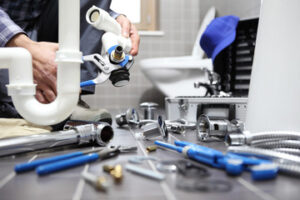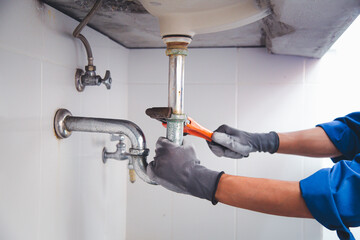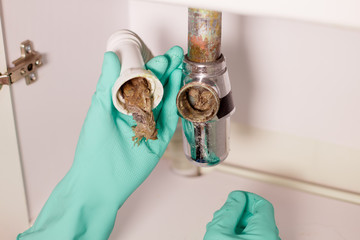The Basics Of Plumbing
Plumbing involves the installation, repair, and maintenance of pipes and fixtures that deliver potable water, remove waste, and provide venting systems in residential and commercial settings.
Plumbers follow strict codes, regulations, and practices to ensure the safe and efficient functioning of a building’s water systems. These include the water supply system, the drainage system, and the venting system.
Whenever you experience problems with your plumbing, be sure to contact Plumbing Express, Inc. for assistance. We’re happy to answer any questions you have! Contact us today for more information or to schedule an appointment.

Water Heater
Water heaters store hot water for appliances and fixtures like dishwashers, clothes washers, showers, tubs, and sinks. They work by heating incoming cold water to sanitize dishes and laundry, for bathing and personal hygiene upkeep, and other everyday activities.
Most homes in the country use tank-type water heaters, which are cylindrical tanks that hold between 75 and 400 L (20-40 gallons). These systems heat the water with electricity, natural gas, propane, heating oil, or solar power. Most are designed to last 8-12 years but can corrode over time and need regular maintenance.
The hot water service line connects the plumbing system to the water heater, bringing heated water to fixtures when needed. This pipe is usually insulated to help keep the hot water at the ideal temperature. In some homes, a drain valve is installed at the bottom of the tank, for when it’s necessary to empty the tank or remove sediment.
Whenever someone uses hot water, the thermostat inside the water heater activates the element or elements that heat it to the proper temperature. When the thermostat senses that the water has reached the desired temperature, it shuts off the element. The water then flows out of the drain valve at the bottom of the tank.
Over time, the bottom of the tank can fill with natural sediment and minerals that cling to the sides of the tank. This can affect the efficiency of the water heater and shorten its lifespan. It is recommended to perform preventative maintenance on these tanks regularly, including a periodic drain and flush to remove this sediment.
Both electric and gas models have a safety valve that automatically shuts off the flow of hot water to the fixture when the pressure reaches too high. A gas model also has a thermocouple that senses whether the pilot light is on, and if not, shuts off the gas flow to the burner. A sturdy, heat-resistant drain pan should be placed underneath the water heater, to catch any spills or runoff.
Main Water Supply Line
The main water supply line carries fresh, clean water into the home from a city water source. These pipes are often made of copper, galvanized iron, or plastics. They are buried underground and usually insulated, which prevents the lines from freezing in winter. They run to the water meter and then split into two paths – one for hot and cold water, which travels throughout your house to faucets and fixtures.
Over time, these pipes can corrode and develop leaks. To reduce the risk of corrosion, it is important to have your water supply lines checked and maintained regularly. This can be done by a licensed plumber and includes flushing the lines, checking for leaks, and performing routine maintenance. In some cases, it may also be necessary to replace the pipes due to age or damage.
Many problems with a water line can be caused by improper installation or lack of maintenance. In addition, tree roots can cause serious problems if they come in contact with the water lines. These problems can be avoided by taking measures to protect the line from root growth, such as removing trees or planting them further away from the lines, and by hiring an experienced plumber for regular maintenance and inspections.
Water lines can also experience less dramatic problems, such as a slow leak. If left unchecked, these can lead to significant damage over time and can be costly for homeowners. A professional plumber can assess your home’s plumbing system and determine if a backflow preventer is needed.
Every home or property owner should have a basic understanding of how their water supply works, what types of materials it’s made of, and where to look for potential problems. This knowledge can help you detect and deal with plumbing issues quickly and competently. Having a good relationship with a trusted plumbing contractor can help you avoid expensive repairs and replacements.
Sewer System
The sewer system takes wastewater filled with bacteria and other harmful substances and transports it to a sewage treatment plant. Once there, it undergoes three different stages of purification. Then it is returned to the environment clean and safe. This essential system requires regular inspection and upkeep to prevent any issues with bacterial growth that could lead to health risks for the community.
Most residential and commercial buildings are connected to a public sewer system. You can tell if your property is on a public sewer system by checking your municipal records. You can also look around your property for signs of a public sewer line, such as an unnatural-looking hill or a rectangular septic tank. Additionally, you can examine your utility bills to see if your garbage or water bill includes fees for sewer service.
A sanitary sewer system is a complex network of pipes that carry away waste from homes and businesses. Small pipes leave each building and join larger ones called sewer laterals that run into a main sewer line. The main sewer lines are typically 3 to 5 feet in diameter. These huge lines run underneath streets and other roadways, with manholes on the sides of the road to allow access for maintenance and repairs.
Sewage pipes collect and transport waste from all the homes and businesses in a municipality, and they are often made of cast iron or other strong materials. The force of gravity pushes the sewage down into the pipes and toward the sewage treatment plant, but in some low-lying areas, a pump is used to move the sewage when gravity alone won’t suffice.
Many cities and towns are replacing their old, aging sewer pipelines with newer, more durable pipes that can withstand the pressure of wastewater. These pipe replacements may include a technique called pipe bursting, which uses a hydraulic ram to break apart the older pipe and draw in a new one behind it.
If you live in an urban area, chances are your home is on a sewer system. If you live in a rural area, you probably have a private septic system. In both cases, it’s important to have your system regularly inspected and pumped by a professional to keep it working properly.
Disposal
Most homes have a garbage disposal system installed to help keep the kitchen clean and reduce food waste. While these systems can handle most food waste, certain items are forbidden from disposal. Stringy or fibrous waste such as asparagus, banana peels, and corn husks can wrap around the blade and cause jams. Fats and oils are another big no-no because they will harden in the drain pipe, block the shredding ring mechanism, and cause foul odors. Most modern disposals come with air pressure switches or sink-top models that use air to turn the motor on and off rather than electricity. This eliminates the need for electrical wiring and makes the switch more accessible to wet hands.
Installation
Plumbing is the system of pipes, fixtures, and appliances that carry water and remove waste in homes, businesses, and other structures. Plumbers install, repair, and maintain these systems. They also inspect them to ensure that they are functioning properly and safely. Plumbing involves a wide range of skills, including the ability to read blueprints and understand construction processes. Plumbers must also be able to identify and troubleshoot problems with pipes and appliances.
Plumbing work can be done on new and existing buildings. New construction requires careful planning to make sure the building has a functional plumbing system. This includes setting the sewer accommodation stubs and ensuring that they connect to the main line. It also involves making sure there are enough water supply stubs for the whole building and installing all necessary fixtures. In some cases, plumbers must create custom parts to meet unique design needs.
Once the building is finished, it’s time for the plumbing to be tested. This is when any problems can be identified and fixed before they cause serious damage. Keeping up with regular plumbing services is also important, as it will help keep your home or business running smoothly.
Plumbing is an essential part of any building. It provides clean, safe water for drinking and cooking, and removes waste and sewage. Without a working plumbing system, a building could suffer from severe water damage and health hazards. A good plumber will be able to diagnose and fix any issues with your plumbing quickly and efficiently. This will save you money and stress in the long run.


